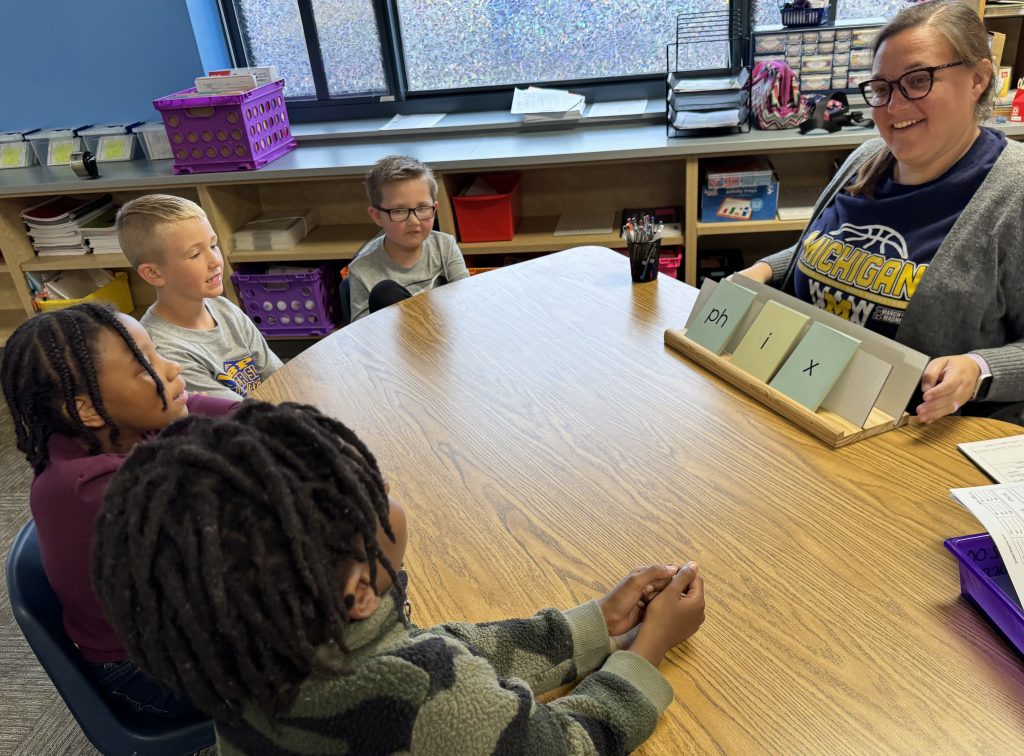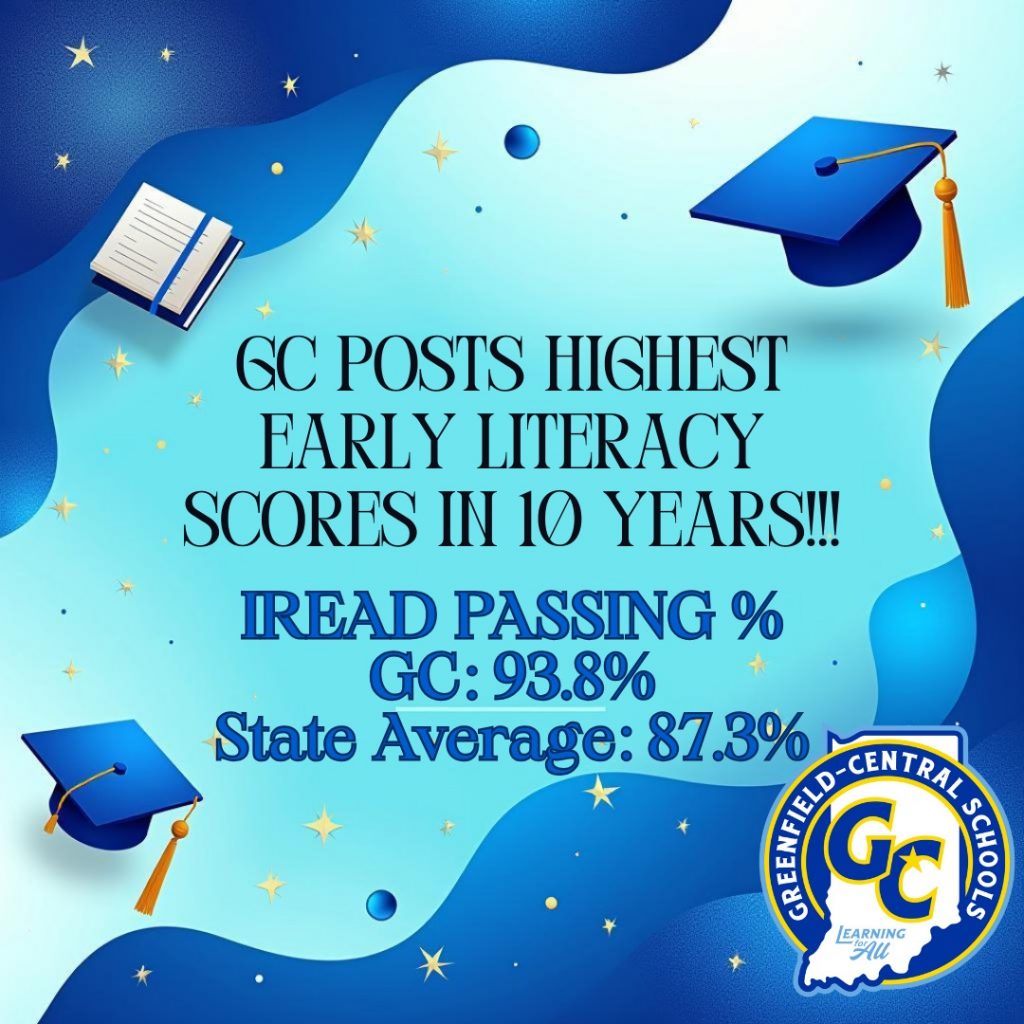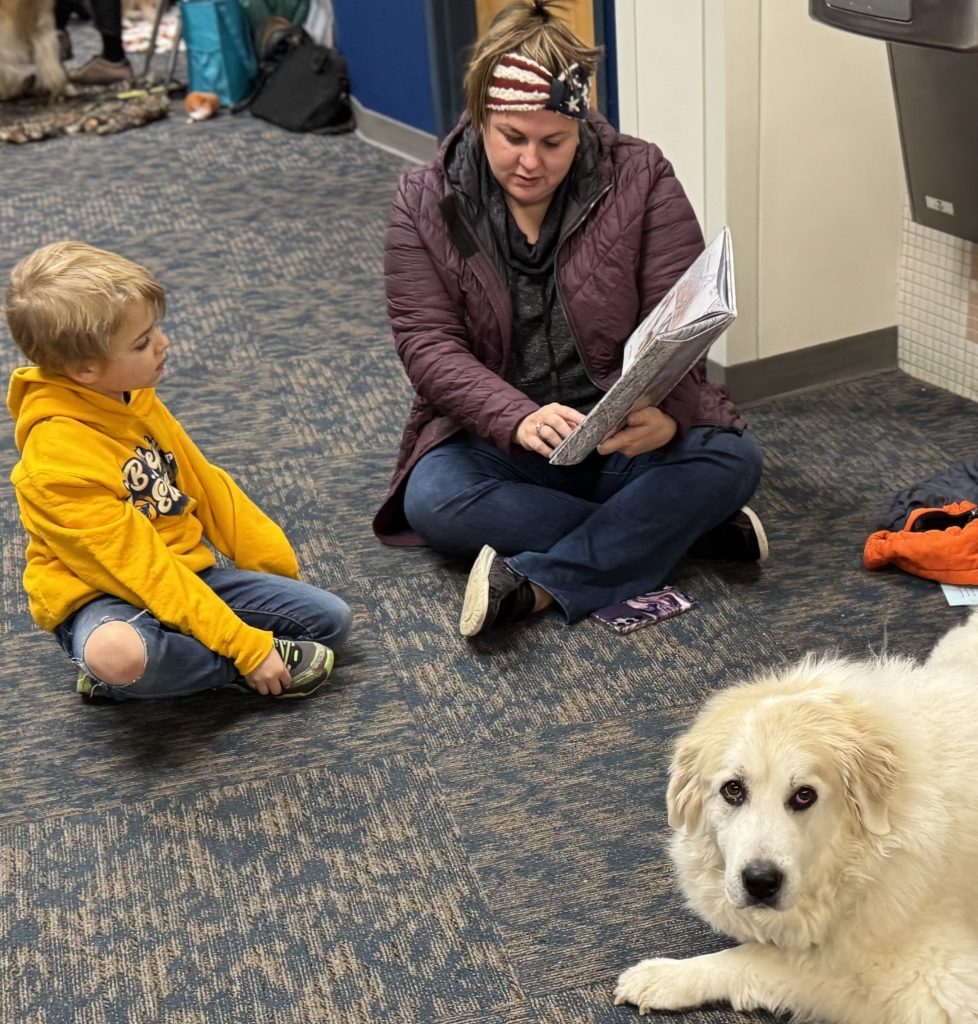
Greenfield-Central is celebrating reading success, marking the highest IREAD passing rate for the school corporation in the last 10 years.
GC elementary schools have an “all hands on deck” mindset where all teachers and staff play a role in helping students read, says Superintendent Dr. Harold Olin.
GC’s 93.8% IREAD passing rate was celebrated at the September school board meeting, and school leaders say they are extremely proud of the work of students, teachers and administration. GC will continue to explore ways to support students and families in the future.
Success in reading

Elementary schools monitor progress of reading skills from kindergarten all the way through third grade and beyond. They use a combination of large group instruction time, small group periods, and even reading interventionists that help those who are struggling the most to ensure children are able to read and understand what they’re reading by the third grade.
The IREAD-3 assessment is Indiana’s benchmark standard for tracking that children are able to read and comprehend passages of words. Scores from the 2024-2025 school period were released in August, but GC school leaders broke down numbers even further in September to help the community understand how local children are faring.
GC’s 93.8% passing rate is higher than the 2025 state average of 87.3%. GC ranked No. 100 out of 360 school districts.
“Our 2025 IREAD-3 scores are a testament to the hard work that our elementary students have exhibited over the last four years,” Olin said. “Success in reading starts in the homeroom classroom. Our core teachers have become experts in reading instruction. Beyond the core teachers, our interventionists play a vital role in identifying reading deficiencies and supporting students in ways that bring their performance up to grade level. And, of course, we have a number of related arts teachers and classified staff members who assist students in this journey as well.”

Broken down by each elementary building, Eden and Harris elementary each celebrated a 96.9% passing rate; Weston Elementary, 96%; and J.B. Stephens Elementary, 89.7%.
Building relationships is paramount
During a recent morning at J.B. Stephens Elementary School, Erin Patterson and Heather Cavette were working with groups of three to four students at a time. Children sounded out letter combinations, made nonsense words using phonics, and even rejoiced at the hint of the upcoming holiday when they sounded out the word “trick.”
“Trick or treat!” a third grader exclaimed as she looked through card combinations that formed both silly and real words. “I like this– it’s fun!”
Patterson shifted from one exercise to another with ease, and said keeping reading fast-paced and interactive makes children excited to learn. Giving children extra time to gain confidence in small groups is rewarding.
“Seeing the light in their faces when they are able to read words is priceless,” Patterson said. “My first graders glow with pride.”

Cavette agreed.
“Ultimately building relationships and providing a safe place has created a culture in which students can actively learn while meeting their personal needs,” she said.
Caring teachers provide interactive instruction
Devon Marine, director of elementary education for GC, says it takes teams of teachers and reading interventionists that care about students to see reading success. Beyond the positive statistics of test scores climbing upward, Marine said there is plenty of patience and joyful attitudes from teachers who care about students.
Tests are important to understand where children are with their reading skills, Marine said. But school is still interactive, full of caring adults that want to see children succeed.
GC elementary schools incorporate fun with learning. “Success groups” set children in groups of their peers– high ability children work together to read challenging materials, while other groups are designed for children with a greater need to learn phonics or comprehension.

Children who need additional help see reading interventionists, available since GC is a Title 1 school district.
Two years ago, GC opted to start testing second graders with the IREAD-3 test– an opportunity the state opened up to let schools see which children need extra help by the third grade. Now, the Indiana Department of Education requires all Indiana schools to test students with IREAD-3 in second grade.
“If we can get those kids across the finish line in second grade, then it allows us to take some of the guesswork out of where our third graders are the following year,” Marine said.
Students who pass IREAD in second grade don’t have to take it again in third. Last year, more than 75% of GC second graders passed IREAD; the state average was only 48%.
GC leaders are also proud of the way special groups scored: 78% of special education students received a passing IREAD score. Only eight school districts in Indiana tested more students than GC and had a higher passing percentage.
Of third graders on free and reduced lunch due to income instability, 90% passed; only 11 school districts in the state tested more students and scored higher.
Of the GC students who speak multiple languages, 80% received a passing score.
Parents and caregivers are encouraged to help
Becoming proficient readers by grade three allows children to learn and excel across all subjects in fourth grade and beyond.

Another factor in successful readers is the home, Marine said. GC schools are partnering more with parents than before. They encourage families to read together, and stress to parents the importance of the IREAD assessment.
GC’s literacy curriculum over the last two years has shifted to a foundational reading focus. “Fundations” is a program for kindergarten through second-grade students, with a focus on the science of reading. Teachers are encouraging parents to read daily with their children.
“Parents count on the schools to be the experts on instruction– which we are– but our goal is to continue to build that partnership with parents to prioritize reading at home. Reading with their students for 20 to 30 minutes at night can do phenomenal things.”
And while the IREAD-3 is taken in the spring, this year smaller ILEARN Checkpoints are being given so families can understand how their students are progressing. Checkpoints serve as quick tools to guide instruction and support each child’s learning.
The results of the first round of Checkpoint tests will be sent home during fall break in October. Later in the year, parents will have access to a family portal with results.
Marine said he is hopeful student achievement reflected with IREAD-3 tests will continue to rise.
“We are extremely proud of the work of the students, teachers and administration in accomplishing this feat,” he said of this year’s scores. “Greenfield-Central continues to explore ways to support our students, families, and staff in our quest to achieve a 95% passing rate on the IREAD assessment.”
By Maribeth Vaughn

(Pictured are Harris Elementary ‘Read Up’ community volunteers anxiously waiting to meet their 3rd grade students) Of third graders on free and reduced lunch due to income instability, 90% passed; only 11 school districts in the state tested more students and scored higher.
